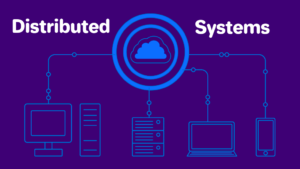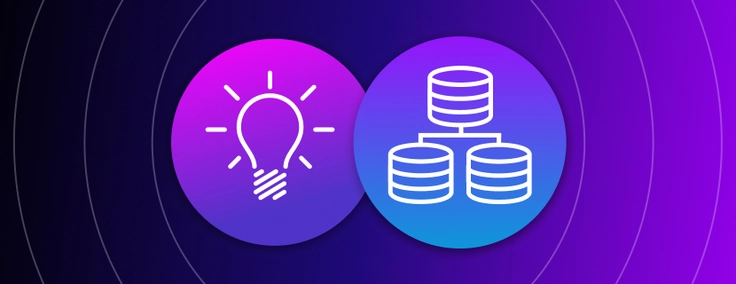Organizations today are experiencing a radical transformation in how they collect, process, and leverage data. The explosive growth of devices generating information at the network edge has fundamentally changed our approach to data handling.
Consequently, Distributed Data Management has emerged as a critical strategy for businesses seeking to harness the full potential of their expanding data ecosystems.
According to industry analysts, by 2025, approximately 75% of enterprise-generated data will be processed outside traditional centralized data centers or cloud environments.
The Edge Computing Imperative
The traditional centralized approach to data processing simply cannot keep pace with modern requirements. Billions of IoT devices continuously collect real-time information across industrial facilities, retail environments, healthcare systems, and smart city implementations.
These devices generate massive volumes of data that would overwhelm conventional networks if transmitted back to central processing locations.
Edge computing addresses these challenges by moving computation and storage closer to data sources. This proximity enables faster processing, reduces network strain, and significantly decreases latency.
This distributed architecture creates more resilient systems that can continue functioning even when disconnected from central networks.

The Limitations of Centralized Approaches
Legacy data management systems face several critical limitations when dealing with edge-generated data:
- Excessive bandwidth consumption when transmitting raw data upstream
- High latency that prevents real-time applications
- Reduced application responsiveness
- Single points of failure
- Scalability constraints
Moreover, these limitations become increasingly problematic as organizations deploy more edge devices and develop more sophisticated applications requiring real-time insights.
Modern Distributed Data Management Technologies
To overcome these challenges, purpose-built database technologies have emerged, specifically designed for edge environments. These solutions feature:
- Lightweight footprints requiring minimal resources
- Robust data synchronization capabilities
- Conflict resolution mechanisms
- Autonomous operation during network disruptions
- Seamless resynchronization when connectivity returns
Many modern edge databases implement conflict-free replicated data types (CRDTs) that automatically reconcile distributed datasets and maintain consistency across nodes. Additionally, these systems can operate independently during disconnections, then smoothly resynchronize when network access returns.
Performance Optimization Strategies
Effective Distributed Data Management can dramatically improve application performance. Edge computing typically reduces latency to under 5 milliseconds, compared to 20–40 milliseconds in cloud environments.
This reduction transforms capabilities for latency-sensitive applications in manufacturing, logistics, and healthcare sectors.
Organizations must implement strategic approaches to data partitioning to achieve optimal performance. Horizontal partitioning distributes datasets across nodes based on ranges or keys, while vertical partitioning separates data by column relevance. Both techniques should be informed by:
- Usage patterns
- Access frequency
- Data relationships
- Network topology
Query Optimization in Distributed Environments
Traditional query optimization strategies often fall short in distributed contexts. Consequently, organizations must implement tailored algorithms such as consistent hashing to:
- Balance the load across nodes
- Minimize unnecessary data shuffling
- Maintain throughput as infrastructure scales
- Reduce network congestion
Furthermore, query planning must account for the distributed nature of data, prioritizing operations that can be executed locally whenever possible.
Edge-Cloud Hybrid Architectures
Many organizations implement edge-cloud hybrid models that combine local processing for real-time needs with centralized systems for complex analytics and long-term storage. This hybrid approach leverages the strengths of both paradigms while mitigating their weaknesses.
These systems typically rely on:
- Managed infrastructure services
- Well-defined APIs
- Standardized data formats
- Event-driven communication patterns
Together, these elements create unified, scalable data pipelines connecting edge nodes to centralized resources.
Navigating Implementation Challenges
Despite its considerable benefits, implementing distributed data management systems introduces significant complexity. Organizations must address several critical challenges:
Data Consistency and Synchronization
Maintaining consistency becomes increasingly difficult as the number of edge nodes grows. Synchronization mechanisms must be:
- Resilient against network disruptions
- Aware of potential conflicts
- Capable of handling asynchronous updates
- Efficient with bandwidth utilization
Systems must function independently during disconnections while ensuring data remains coherent when connectivity returns.
Security Considerations
Edge devices often operate in physically vulnerable locations, creating unique security challenges. Comprehensive security strategies should include:
- End-to-end encryption
- Robust identity and access management
- Anomaly detection at the edge
- Secure boot processes
- Regular security updates
These measures protect both data integrity and privacy across the distributed ecosystem.
Resource Constraints
Most edge devices operate under tight resource limitations. Database systems deployed at the edge must therefore be extremely efficient with:
- Memory utilization
- Computational resources
- Power consumption
- Storage capacity
These constraints necessitate careful optimization of database operations and data structures.
The Evolving Role of Database Management
The complexity of distributed systems highlights the changing responsibilities of database administrators. Modern DBAs must develop expertise in:
- Distributed system architectures
- Network optimization
- Security in decentralized environments
- Automated management techniques
- Performance tuning across heterogeneous systems
Organizations that lack these specialized skills increasingly turn to remote DBA services for assistance in designing, implementing, and maintaining their distributed data ecosystems.
Future Directions
Looking ahead, the convergence of 5G networks, artificial intelligence, and edge computing promises to accelerate the adoption of Distributed Data Management approaches. We will likely see:
- Tighter integration between edge nodes and central platforms
- More sophisticated orchestration capabilities
- AI-driven optimization and self-healing systems
- Event-driven architectures that respond dynamically to changing conditions
Organizations that embrace these distributed approaches will position themselves to drive innovation and respond more effectively to market opportunities.
Expert Editorial Comment
The shift toward distributed data management represents both a technical challenge and a strategic opportunity. By bringing computation closer to data sources, organizations can achieve unprecedented levels of performance, resilience, and insight.
However, successfully implementing these distributed architectures requires careful planning, specialized expertise, and ongoing optimization.
As the volume and importance of edge-generated data continue to grow, distributed approaches will become not just advantageous but essential for competitive operations.
Organizations that develop these capabilities now will be better positioned to leverage the full potential of their data assets in the increasingly distributed future.

